
It is natural for fawns to be left alone for extended periods, the agency said.
The Connecticut Department of Environmental Protection has issued a request asking residents to be aware that white-tailed deer are giving birth to fawns around the state and the babies should be left alone.
"With the advent of warm weather, more people are participating in outdoor activities, increasing the chances that someone will come across a tiny fawn. The fawn may appear to have been deserted, but that is usually not the case. The DEP Wildlife Division has been receiving an increasing number of phone calls from people concerned about finding fawns that appear to be orphaned or abandoned," the agency said in a statement.
"It is critical for people to leave deer fawns alone, as the animal’s instinctive behavior in its first weeks of life is to remain motionless and let danger pass. The fawn may appear helpless or abandoned, but it is behaving normally in response to a perceived threat. As newborns, the fawns have almost no body odor and their reddish brown coat with white spots makes them almost invisible to predators. Fawns often lie motionless on the ground surrounded by low vegetation and remain perfectly still even when approached by another animal. It is important to realize that young fawns likely do not need your help, and the doe is probably feeding nearby," the statemeent said.
"It is highly unlikely that a fawn found alone has been abandoned," Rick Jacobson, Director of the DEP Wildlife Division said in the statement. "It is best not to touch the fawn and to leave it where it was found for at least 24 hours to determine whether the adult is still returning for feedings. While waiting for the doe to return, it is important that both people and dogs stay away from the fawn. A truly orphaned fawn will show signs of distress by walking around aimlessly and calling out for several hours."
The agency noted that when "a doe gives birth to one or two fawns and nurses them, she leads them into a secluded habitat. Twin fawns may even be separated from each other. The doe then leaves them alone for extended periods of time. She returns to nurse them about three to four times a day, with feeding time lasting approximately 15 minutes. This pattern will continue for up to 3 weeks until the fawns are strong enough to accompany the doe or flee from danger"
"Although it may be natural to want to assist young fawns, caring for them does more harm than good," Jacobson said, also in the statement. "Raising fawns for successful return to the wild requires considerable knowledge of deer biology, feeding formulas, countless hours of care, and outdoor caging. Improper care results in underweight and undernourished animals or animals that are not able to return to the wild because they have become too accustomed to being around people. Removing fawn deer from the wild, raising them, and keeping them in captivity is illegal."
If a fawn has "truly been orphaned, it is best that the animal be placed in the care of a licensed wildlife rehabilitator with the skills, training, and state authorization to care for fawns. A fawn suspected of being orphaned should be left where it was found, and its location should be reported to a wildlife rehabilitator qualified to care for fawns," the statement said.
A list of wildlife rehabilitators and their contact information can be obtained on the DEP Web site at www.ct.gov/dep/wildlife, or by calling the DEP Wildlife Division at 860-424-3011, weekdays or the DEP Emergency Dispatch Center at 860-424-3333 (after hours or on weekends).
Editor's note: The information contained in this post was released by the Connecticut Department of Environmental Protection.
The Connecticut Department of Environmental Protection has issued a request asking residents to be aware that white-tailed deer are giving birth to fawns around the state and the babies should be left alone.
"With the advent of warm weather, more people are participating in outdoor activities, increasing the chances that someone will come across a tiny fawn. The fawn may appear to have been deserted, but that is usually not the case. The DEP Wildlife Division has been receiving an increasing number of phone calls from people concerned about finding fawns that appear to be orphaned or abandoned," the agency said in a statement.
"It is critical for people to leave deer fawns alone, as the animal’s instinctive behavior in its first weeks of life is to remain motionless and let danger pass. The fawn may appear helpless or abandoned, but it is behaving normally in response to a perceived threat. As newborns, the fawns have almost no body odor and their reddish brown coat with white spots makes them almost invisible to predators. Fawns often lie motionless on the ground surrounded by low vegetation and remain perfectly still even when approached by another animal. It is important to realize that young fawns likely do not need your help, and the doe is probably feeding nearby," the statemeent said.
"It is highly unlikely that a fawn found alone has been abandoned," Rick Jacobson, Director of the DEP Wildlife Division said in the statement. "It is best not to touch the fawn and to leave it where it was found for at least 24 hours to determine whether the adult is still returning for feedings. While waiting for the doe to return, it is important that both people and dogs stay away from the fawn. A truly orphaned fawn will show signs of distress by walking around aimlessly and calling out for several hours."
The agency noted that when "a doe gives birth to one or two fawns and nurses them, she leads them into a secluded habitat. Twin fawns may even be separated from each other. The doe then leaves them alone for extended periods of time. She returns to nurse them about three to four times a day, with feeding time lasting approximately 15 minutes. This pattern will continue for up to 3 weeks until the fawns are strong enough to accompany the doe or flee from danger"
"Although it may be natural to want to assist young fawns, caring for them does more harm than good," Jacobson said, also in the statement. "Raising fawns for successful return to the wild requires considerable knowledge of deer biology, feeding formulas, countless hours of care, and outdoor caging. Improper care results in underweight and undernourished animals or animals that are not able to return to the wild because they have become too accustomed to being around people. Removing fawn deer from the wild, raising them, and keeping them in captivity is illegal."
If a fawn has "truly been orphaned, it is best that the animal be placed in the care of a licensed wildlife rehabilitator with the skills, training, and state authorization to care for fawns. A fawn suspected of being orphaned should be left where it was found, and its location should be reported to a wildlife rehabilitator qualified to care for fawns," the statement said.
A list of wildlife rehabilitators and their contact information can be obtained on the DEP Web site at www.ct.gov/dep/wildlife, or by calling the DEP Wildlife Division at 860-424-3011, weekdays or the DEP Emergency Dispatch Center at 860-424-3333 (after hours or on weekends).
Editor's note: The information contained in this post was released by the Connecticut Department of Environmental Protection.




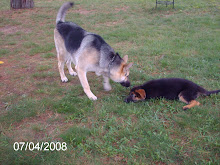
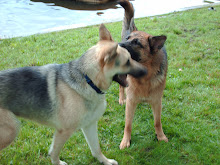

lr2.jpg)

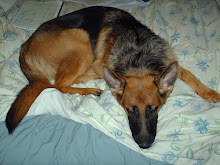
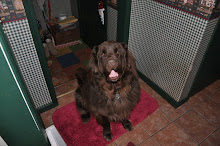


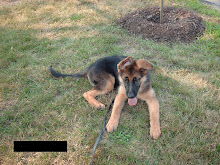








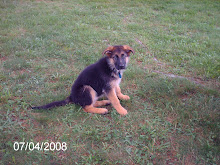
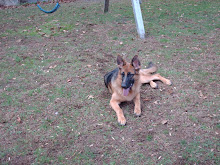





No comments:
Post a Comment